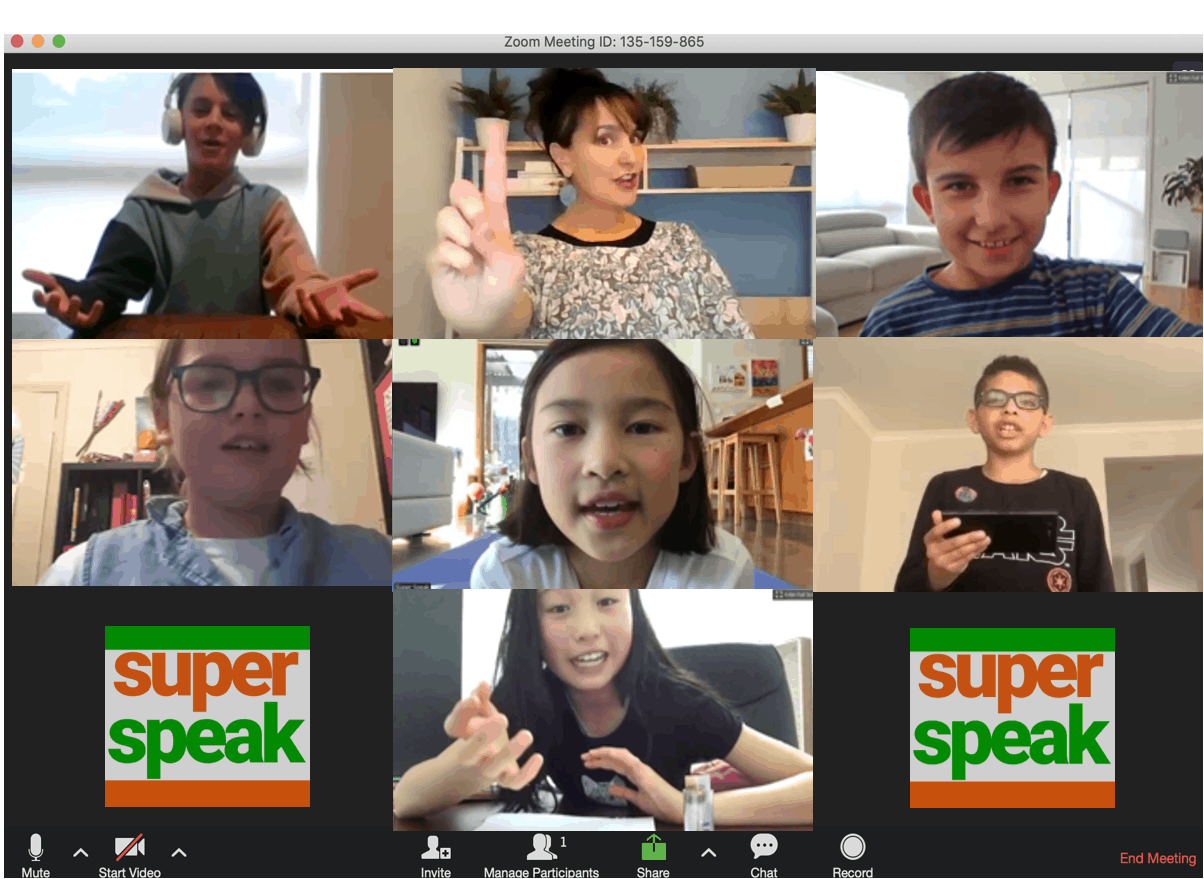When is comes to effective communication skills and delivering your message to others, much can be achieved through non-verbal speaking skills for kids. Spending time with your child learning & practicing non-verbal speaking skills can have significant lifetime pay-offs. Not only can it help improve their effectiveness as public speakers, but it can also develop their every day communication skills.
Here are Super Speak’s top tips to help improve your child’s non-verbal speaking skills:
1. Adopt the Super Speak Stance: perception is reality in the world of communication. If you adopt a confident posture, not only do YOU feel more confident, but the audience will believe you are too! Have your child stand up straight, head up to make eye contact, feet shoulder width apart, and hands by your side relaxed position.
2. Leverage the Power of Hand Gestures: Hand gestures can be a powerful tool for conveying messages. Start with a selection of basic and common gestures tailored for younger children. Remember, the key is moderation. Start with common gestures tailored for younger children, focusing on moderation and essential gestures that keep the audiences attention. You can easily find examples of common hand gestures with a quick online search.
3. Think Inside the Box: While Super Speak usually has children thinking “outside of the box” to fuel creativity, when it comes to hand gesutres, we encourage our students to think inside the box. By keeping gestures within the “green zone,” roughly from the top of the chest to the bottom of the waist, they remain less distracting for the audience. The strategic occasional use of gestures outside this range can have a heightened impact.

4. Mastering Facial Expressions: Facial expressions are potent tools for conveying emotions and meaning. Emphasize the importance of aligning facial expressions with the intended message to make your child’s speaking more impactful.
5. Use Pauses Effectively: pauses are underutilized gems in public speaking. Teach your child to use them effectively to emphasise key points and allow the audience time to digest information being presented.
6. Leverage Visual Aids and Props: encourage the use of visual aids and props to enhance their message and captivate the audience. This dynamic approach injects interest and effectiveness into their presentations.
At Super Speak, our award winning program teaches children aged 6-14 public speaking & presentation skills. We teach kids how to prepare and write speeches plus how to speak effectively using their voice & body. Our fun learning program incorporates both public speaking & drama to ensure our students gain broader learning outcomes . Backed by a seasoned teaching team and a comprehensive curriculum proven over 20 years, we champion fun, supportive, and high-energy classes. Our students learn to be more confident & capable public speakers & everyday communicators for life. Check out Super Speak Public Speaking Program here and join over 65,000 other children who have trusted Super Speak since 2006.


